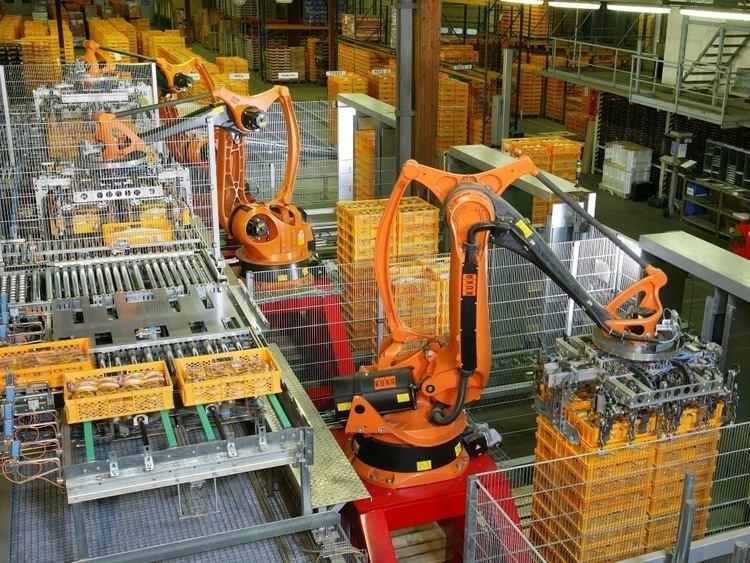 | ||
Factory automation infrastructure is a more recently coined phrase that is used to group the overall top-to-bottom end-to-end; products, procedures, building (or group of buildings), networks, controllers, interfaces, machinery, and assembly lines that are involved in the physical and organizational structures and facilities used in the production of goods. This grouping describes a general engineering and manufacturing environment that is defined by its ability to manufacture and/or assemble goods chiefly by machines, integrated assembly lines, and robotic arms. These environments are also defined by their coordination with (and usually their systematic integration with) the required automatic equipment to form a complete system. This system is essentially a solution for the automation and manufacturing of a particular production process of an intended output and/or end product.
Contents
Automation
The Automation process is a widely accepted form of production that has made great leaps and bounds in the production process as a whole. Automation has led to the production of sophisticated parts that have similar output qualities with little fluctuation in general tolerances. The use of automation in the manufacturing process started by using such technologies as the pneumatic and hydraulic systems for use in applications where their mechanical advantages could be used to utilize a production for higher output quality and efficiency. We have since created a complex and highly integrated systems composed of many different technologies and innovative procedures controlled under High Language programming environments with sophisticated operation drivers. These drivers are often running languages that support 6, 7, and 8 axis controls for sophisticated robotics.
Robotic arm
A robotic arm is a type of mechanical arm, usually programmable, with similar functions to a human arm; the arm may be the sum total of the mechanism or may be part of a more complex robot. The links of such a manipulator are connected by joints allowing either rotational motion (such as in an articulated robot) or transnational (linear) displacement. The links of the manipulator can be considered to form a kinematic chain. The terminus of the kinematic chain of the manipulator is called the end effect or and it is analogous to the human hand.
Advantages and disadvantages
The main advantages of automation are:
The main disadvantages of automation are:
